The Ultimate Slow-Roasted Lamb Recipe: Fall-Off-The-Bone Perfection
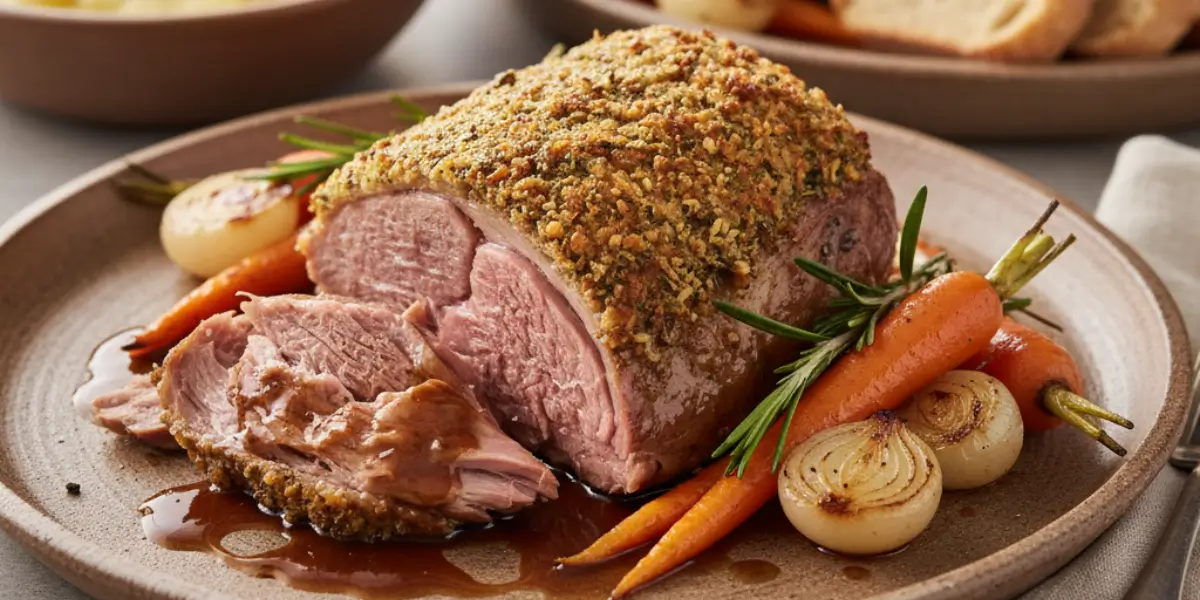
Do you remember the aroma of a special Sunday roast filling the entire house? That scent of garlic and herbs mingling with the rich, savory promise of perfectly cooked meat, a scent that signals comfort, family, and a meal made with love. For me, that memory is always tied to a magnificent roasted lamb. There’s something truly magical about bringing a show-stopping dish to the table, one that looks spectacular but is secretly simple to create. If you’ve ever felt intimidated by the thought of cooking a large cut of meat, I’m here to tell you that your search for the perfect lamb recipe ends today.
We are about to embark on a culinary journey to create the most succulent, tender, fall-off-the-bone lamb you have ever tasted. This isn’t just any lamb recipe; it’s a method, a promise of perfection that will make you the undisputed hero of your next family dinner, holiday feast, or quiet Sunday afternoon. Forget dry, tough, or flavorless meat. Get ready for a masterpiece.
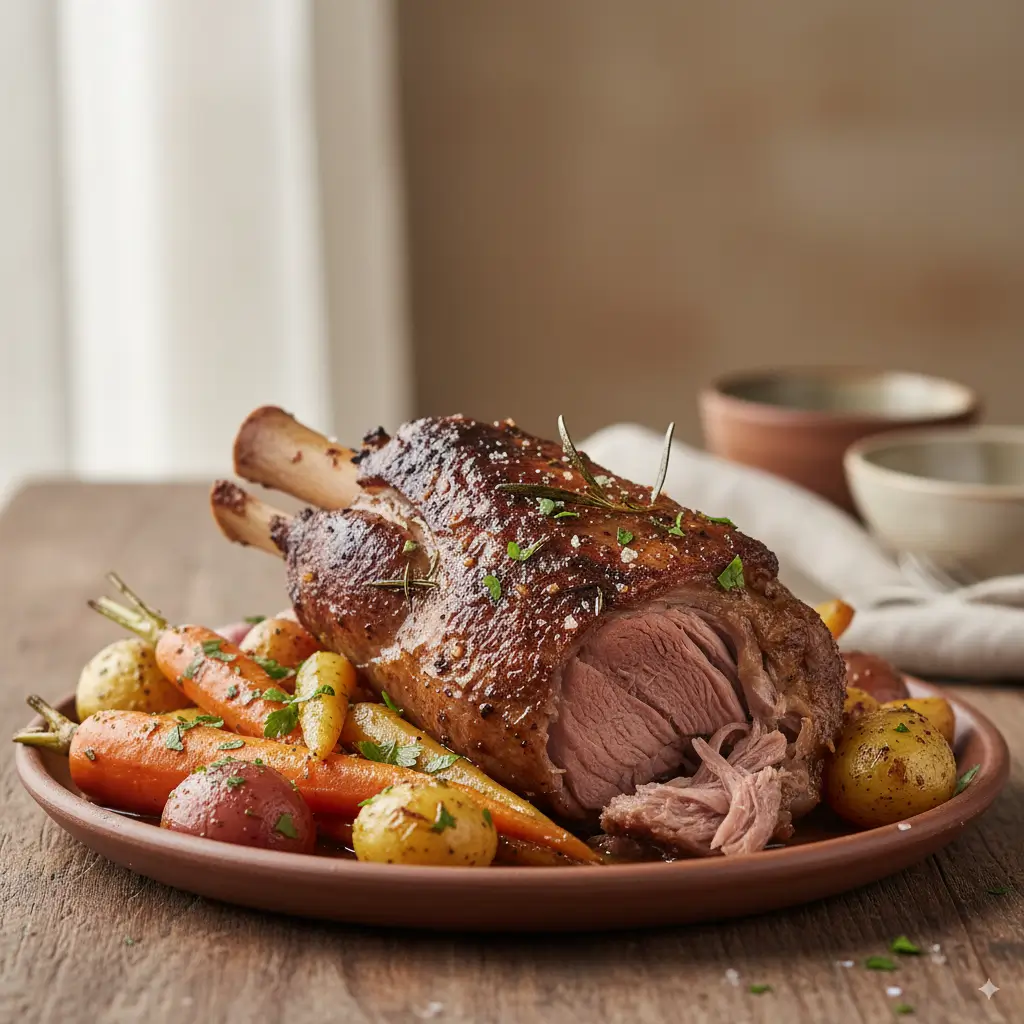
slow-roasted lamb recipe
Ingredients
Method
- Step 1: PreparationRemove lamb from refrigerator 1 hour before cooking to bring to room temperature. Preheat oven to 450°F (230°C).
- Step 2: Create Herb PasteIn a small bowl, combine minced garlic, chopped rosemary, thyme, olive oil, salt, pepper, and Dijon mustard. Mix until it forms a paste-like consistency.
- Step 3: Score and SeasonUsing a sharp knife, make small slits all over the lamb, about 1 inch apart. Rub the herb paste all over the lamb, working it into the slits. Sprinkle breadcrumbs over the surface.
- Step 4: Initial RoastingPlace lamb in a roasting pan and roast at 450°F for 20 minutes to develop a crust.
- Step 5: Reduce TemperatureLower oven temperature to 325°F (165°C) and continue roasting for approximately 2 hours, or until internal temperature reaches 130°F for medium-rare.
- Step 6: Rest and FinishRemove from oven and tent with foil. Let rest for 15 minutes. Drizzle with lemon juice and dot with butter before carving.
- Step 7: CarvingCarve against the grain into thin slices and serve immediately.
Notes
Pros
- Creates an impressive centerpiece for special occasions
- Herb crust adds incredible flavor and aromatic appeal
- Relatively simple preparation despite elegant presentation
- Works well for feeding large groups
- Leftovers make excellent sandwiches and salads
- Can be prepared partially in advance
- Classic flavor combination that appeals to most palates
Cons
- Expensive cut of meat, not budget-friendly
- Requires long cooking time, not suitable for quick meals
- Need meat thermometer for best results
- Can be intimidating for novice cooks
- Strong lamb flavor may not appeal to all diners
- Requires advance planning due to cooking time
Why This Slow-Roasted Lamb Recipe is an Absolute Game-Changer
Not all lamb dishes are created equal. While a quick-seared lamb chop has its place, the deep, complex flavor and unbelievable texture of slow-roasting are in a league of their own. This specific lamb recipe is designed for maximum impact with minimal stress, making it a true kitchen game-changer.
Achieving Unbelievable Tenderness: The Magic of Low and Slow
The secret to meat that literally melts in your mouth is simple: time and low heat. Lamb shoulder, the cut we’re using, is rich in connective tissue and marbling. When cooked quickly at high heat, this tissue can become tough. However, when you let it roast gently for hours, that collagen breaks down into luscious gelatin. This process not only tenderizes the meat but also bastes it from the inside out, ensuring every single bite is juicy and succulent. This is the core principle that makes this such a reliable lamb recipe.
A Symphony of Flavors: Garlic, Rosemary, and Lemon
The flavor profile of this dish is classic for a reason. It’s a holy trinity of Mediterranean tastes that beautifully complements the distinct, rich flavor of the lamb without overpowering it.
- Pungent Garlic: We use whole cloves studded into the meat, which soften and sweeten during the long roast, infusing the lamb with a mellow, aromatic essence.
- Woodsy Rosemary: This robust herb stands up to the long cooking time, its pine-like notes weaving through the meat and creating that quintessential roast aroma.
- Bright Lemon: A touch of citrus cuts through the richness, adding a bright, fresh note that balances the entire dish. This simple combination elevates the lamb recipe from good to unforgettable.
The Perfect Centerpiece for Any Occasion
Imagine placing this golden-brown, glistening roast on the dinner table. The meat is so tender you can pull it apart with two forks. It’s a moment of pure culinary theater. Whether it’s an Easter celebration, a festive Christmas dinner, or a simple gathering of loved ones, this dish commands attention and promises a memorable meal. The beauty of this lamb recipe is that it feels incredibly special, yet the oven does almost all the work for you.
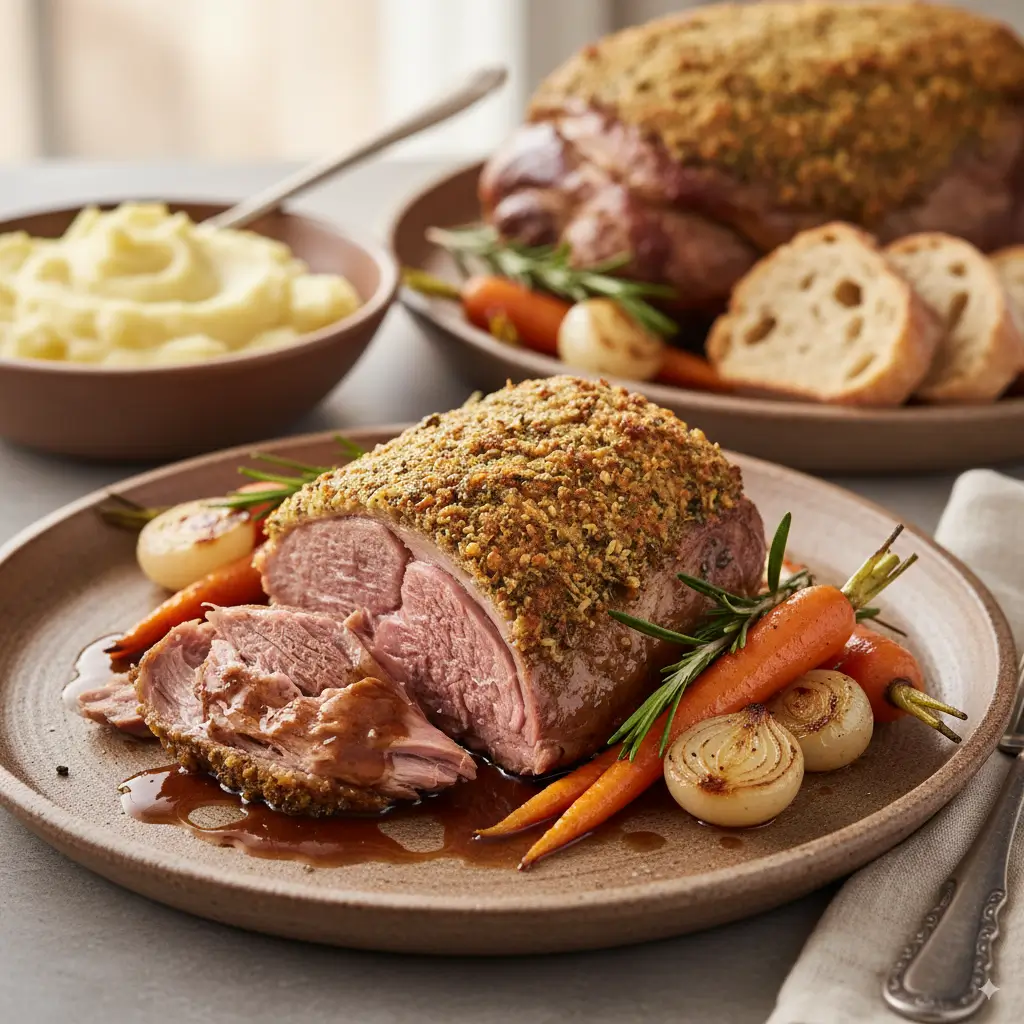
Choosing the Best Cut for Your Perfect Lamb Recipe
The foundation of any great dish is a great main ingredient. Walking up to the butcher counter can be daunting, but understanding the best cuts for slow roasting will empower you to make the perfect choice for your lamb recipe.
Lamb Shoulder: The Hero of Slow-Cooking
For this particular lamb recipe, lamb shoulder is the undisputed champion. It’s a hard-working muscle, meaning it has more connective tissue and fat than leaner cuts like the leg. This is exactly what you want for a long, slow roast. That marbling and collagen are the secret ingredients that guarantee a moist, flavorful, and forgiving result. A bone-in shoulder will also add even more flavor to the finished dish and the subsequent gravy.
Leg of Lamb: A Classic and Leaner Choice
A leg of lamb is another fantastic option and is often considered the more traditional choice for a roast. It’s a leaner cut than the shoulder, which means it cooks a bit faster and is best served slightly pink in the middle (medium-rare). If you prefer a more formal presentation with classic slices rather than pulled meat, the leg is an excellent alternative. Just be sure to monitor the internal temperature carefully to avoid overcooking.
What to Ask Your Butcher for the Perfect Cut
Don’t be shy! Your butcher is your best friend. Here’s what to ask for:
- For this recipe: “I need a bone-in lamb shoulder, please, around 2-2.5kg (4.5-5.5 lbs). I’m planning on slow-roasting it.”
- Check for quality: Look for meat that is pinkish-red with firm, white fat.
- Preparation: Ask your butcher to score the fat cap for you in a diamond pattern. This helps the fat render beautifully and allows the marinade to penetrate deeper.
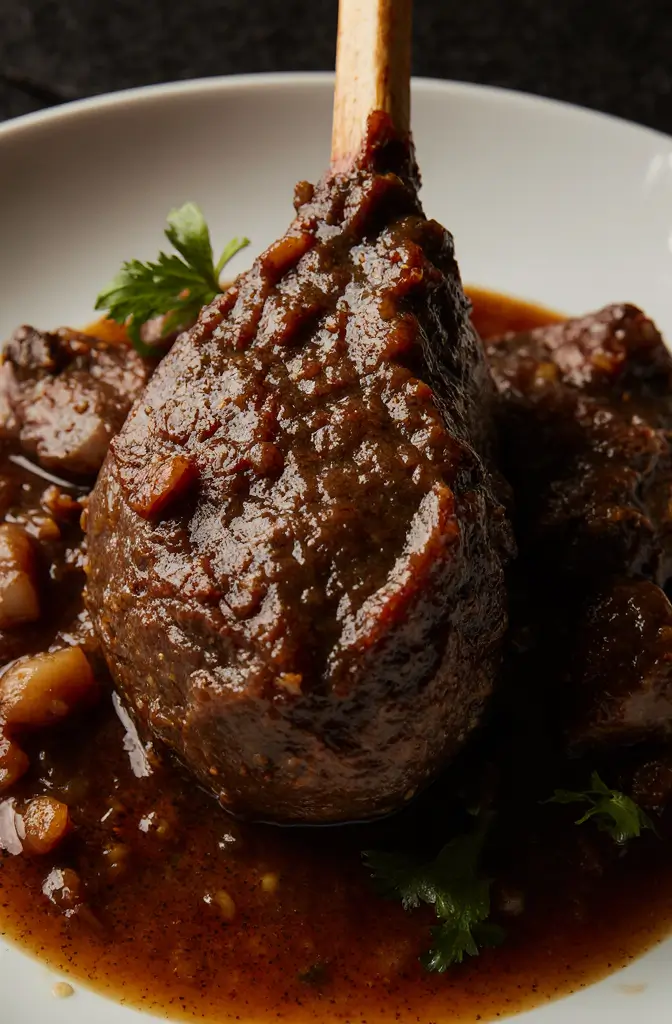
Mastering the Art: A Step-by-Step Guide to This Lamb Recipe
Now for the fun part. Follow these steps meticulously, and you will be rewarded with the most incredible lamb you’ve ever cooked. This is more than just a set of instructions; it’s your roadmap to creating a truly exceptional lamb recipe.
Preparing Your Lamb: The Flavor Foundation
Proper preparation is non-negotiable. This is where you build the layers of flavor that will define the dish.
- Bring to Room Temperature: Take the lamb out of the fridge at least an hour before you plan to cook it. A cold piece of meat will cook unevenly.
- Create the Marinade: In a small bowl, mix together olive oil, chopped rosemary, minced garlic, lemon zest, salt, and plenty of freshly cracked black pepper.
- Massage the Meat: Pat the lamb shoulder dry with paper towels. Using your hands, rub the marinade all over the lamb, pushing it into the scored fat and any crevices. If you have time, let it marinate for a few hours or even overnight in the fridge for a deeper flavor. This step makes this lamb recipe extra special.
The Roasting Process: Temperature and Timing is Everything
Patience is key. Trust the process.
- Initial Sear: Preheat your oven to a high temperature, around 220°C (430°F). Roast the lamb for 20-30 minutes. This initial blast of heat helps to render the fat and create a delicious golden-brown crust.
- The Long, Slow Roast: After the initial sear, reduce the oven temperature dramatically to 160°C (320°F). Add some liquid to the bottom of the roasting pan (like red wine, stock, or water) to create steam and keep the environment moist.
- Cover and Cook: Cover the roasting pan tightly with foil and return it to the oven. Let it cook for 4-5 hours. The exact time will depend on the size of your shoulder. You’ll know it’s ready when the meat is exceptionally tender and pulling away from the bone.
Creating a Rich, Flavorful Gravy from Pan Drippings
Do not, under any circumstances, throw away the liquidgold at the bottom of your roasting pan. This is the base of an incredible gravy.
- Rest the Meat: Transfer the cooked lamb to a cutting board and cover it loosely with foil. Let it rest for at least 20-30 minutes. This allows the juices to redistribute throughout the meat, ensuring a tender result.
- Skim the Fat: Tilt the roasting pan and use a spoon to skim off most of the clear fat from the surface of the pan juices.
- Make the Gravy: Place the roasting pan over medium heat on your stovetop. Whisk in a tablespoon or two of flour to create a paste (a roux). Slowly whisk in beef or vegetable stock until you have a smooth gravy. Let it simmer for a few minutes to thicken, and season to taste with salt and pepper.
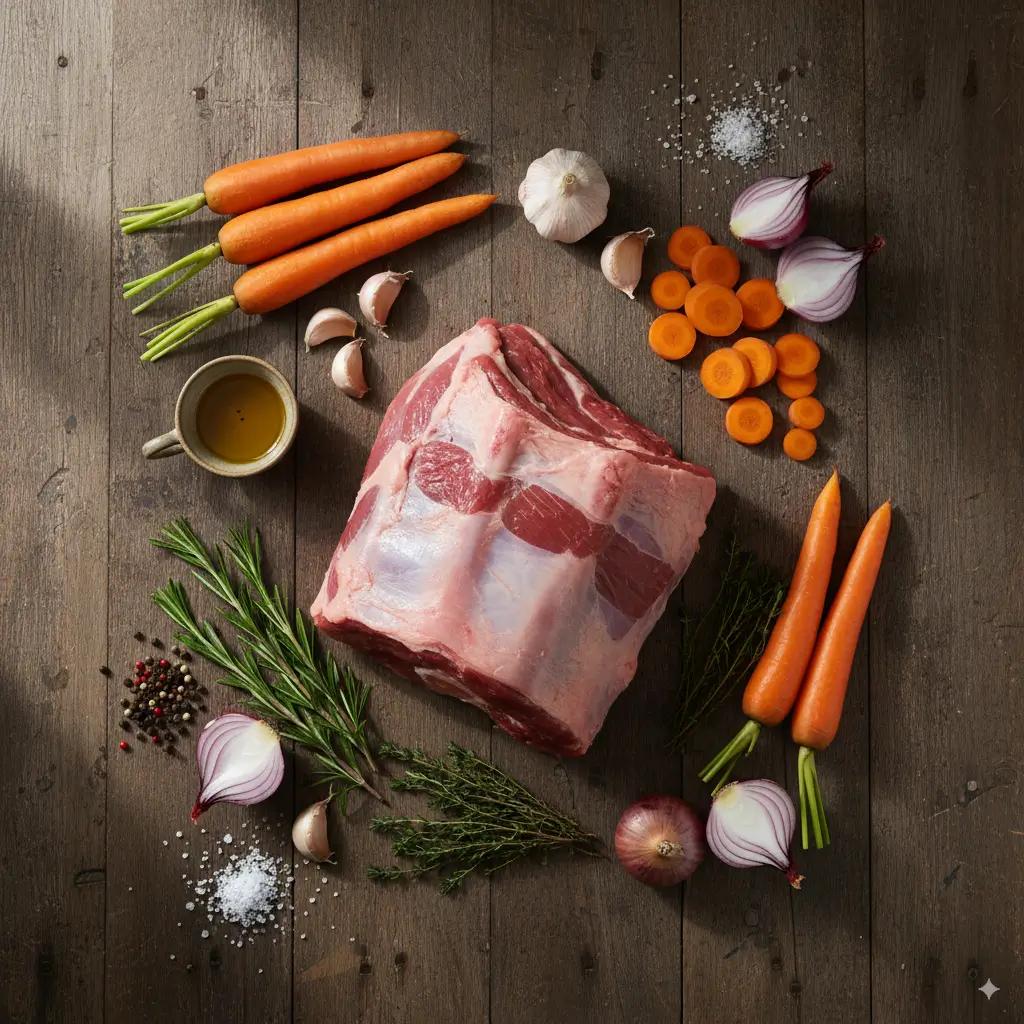
Your Ultimate Slow-Roasted Lamb Recipe Card
| Ingredient | Quantity |
| Bone-in Lamb Shoulder | 2-2.5 kg (4.5-5.5 lbs) |
| Garlic | 1 whole head, cloves separated and peeled |
| Fresh Rosemary | 4-5 sprigs, leaves finely chopped |
| Lemon | 1, zest and juice |
| Olive Oil | 3 tablespoons |
| Coarse Sea Salt | 2 tablespoons |
| Black Pepper | 1 tablespoon, freshly cracked |
| Red Wine or Beef Stock | 250 ml (1 cup) for the roasting pan |
| All-Purpose Flour | 2 tablespoons (for gravy) |
| Additional Stock | 500 ml (2 cups) for gravy |
Lamb Internal Temperature Guide
For those using a leg of lamb or who prefer a specific doneness, a meat thermometer is your best tool. Insert it into the thickest part of the meat, avoiding the bone.
| Doneness | Internal Temperature | Description |
| Medium-Rare | 57-60°C / 135-140°F | Bright pink center, very juicy |
| Medium | 63-66°C / 145-150°F | Light pink center, juicy and firm |
| Well-Done | 71°C+ / 160°F+ | Brown throughout (required for slow-roasting) |
| Fall-Apart | 90-95°C / 195-203°F | For this lamb recipe (shoulder cut) |
Perfect Pairings: What to Serve With Your Masterpiece Lamb Recipe
You’ve cooked the perfect main course; now it’s time to complement it with the right sides. The right accompaniments will turn your amazing lamb recipe into a full, unforgettable feast.
Classic Sides: Roasted Potatoes and Glazed Carrots
You can’t go wrong with the classics. Crispy, fluffy roast potatoes are a must. Pro-tip: parboil them first, give them a good shake in the colander to rough up the edges, and roast them in hot duck fat or olive oil for the ultimate crunch. Sweet, buttery glazed carrots or honey-roasted parsnips also provide a beautiful contrast to the savory lamb. A good lamb recipe deserves great sides.
Fresh Accompaniments: Mint Sauce and Green Beans
To cut through the richness of the lamb, something fresh and green is essential. A vibrant, sharp mint sauce is the traditional and perfect partner. Simply blanching some green beans and tossing them with a little butter, lemon juice, and toasted almonds adds a welcome freshness and crunch to the plate. This makes the entire meal feel more balanced.
Wine Pairings to Elevate Your Meal
A great meal deserves a great wine. The robust flavors of this lamb recipe pair beautifully with a bold red wine.
- Cabernet Sauvignon: Its full body and dark fruit notes are a classic match.
- Bordeaux Blend: A classic pairing for a classic dish. The structure and tannins complement the richness of the lamb.
- Syrah/Shiraz: With its notes of dark berries and pepper, it stands up wonderfully to the garlic and rosemary.

Conclusion: Your New Go-To Lamb Recipe Awaits
You now have all the knowledge and tools you need to create a truly spectacular meal. This slow-roasted lamb recipe is more than just food; it’s an experience. It’s about taking simple, beautiful ingredients and transforming them into something extraordinary through the simple magic of time and temperature. It’s about creating memories around the dinner table with a dish that is both rustic and elegant, comforting and impressive.
Don’t let the long cooking time intimidate you. Embrace the slow process, enjoy the incredible aromas that will fill your home, and prepare for the praise that is sure to come your way. This is the lamb recipe that will become a treasured part of your cooking repertoire.
Now it’s your turn! Try this incredible slow-roasted lamb recipe this weekend. Share your results and any questions you have in the comments below. We love hearing about your kitchen triumphs!
Frequently Asked Questions (FAQ)
Q1: Can I prepare this lamb recipe ahead of time?
A1: Absolutely! You can marinate the lamb up to 24 hours in advance, which will only improve the flavor. You can also fully cook the lamb recipe a day ahead. Let it cool completely, then store it in the fridge. To reheat, place it in a baking dish with a splash of stock, cover with foil, and warm it in a moderate oven (160°C / 320°F) for about 30-40 minutes, or until heated through.
Q2: What’s the best way to use leftovers from this lamb recipe?
A2: Leftovers are one of the best parts of this lamb recipe! The tender, shredded meat is incredibly versatile. You can use it to make amazing shepherd’s pies, toss it with pasta and a rich tomato sauce, stuff it into warm pita bread with tzatziki for delicious sandwiches, or use it as a filling for savory tacos.
Q3: How do I know when my lamb recipe is perfectly cooked without a thermometer?
A3: While a meat thermometer is the most accurate tool for this lamb recipe, you can test for doneness by touch. For this specific slow-roast method, the goal is “fall-off-the-bone” tenderness. You can test this by inserting a fork into the thickest part of the meat and twisting it gently. If the meat offers little resistance and easily pulls away from the bone, your lamb is perfectly cooked and ready to rest.
Are You Try This Recipe ?
There are no reviews yet. Be the first one to write one.

